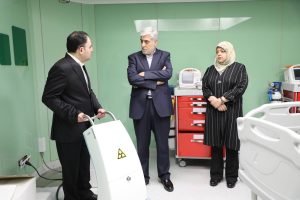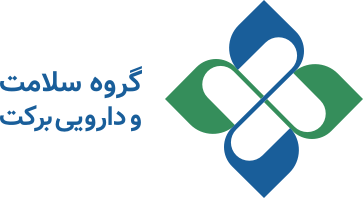
Iran become major hub for anti-cancer drug production
Barekat Health & Pharmaceutical Group: Iran is recognized as one of the major hubs for anti-cancer drug production globally. This success is due to a combination of factors, including international collaborations, scientific and technological advancements, and the use of unique natural resources. The Islamic Republic of Iran has engaged in extensive collaborations with international universities and research centers in the field of anti-cancer drug research and development.
These collaborations manifest in the form of knowledge exchange, joint research projects, and the application of advanced technologies in drug research and development, enabling the country to leverage modern knowledge and technologies for the production of anti-cancer drugs. Iran has made significant progress in biotechnology and nanotechnology, which have contributed to the development of targeted and effective anti-cancer therapies. For example, the use of nanoparticles for the delivery of anti-cancer drugs to targeted cells is a leading research area in Iran, resulting in increased treatment efficacy and reduced side effects.
Moreover, the Islamic Republic of Iran, with its rich biodiversity, utilizes its natural resources to produce herbal anti-cancer drugs. Joint research projects with China in this area are a prime example of Iran’s efforts to use indigenous medicinal plants to develop new drugs. These collaborations have led to the identification and development of effective plant-based compounds for cancer treatment.
On the other hand, one of Iran’s primary goals in the production of anti-cancer drugs is to reduce dependence on imports and increase domestic production. In light of economic sanctions and restrictions on drug imports, Iran has undertaken extensive efforts to develop its pharmaceutical industry. These efforts have resulted in the production of high-quality anti-cancer drugs, making them more accessible to domestic patients.
Joint Projects Between Iran & International Organizations
– Collaborative Projects with the MD Anderson Cancer Center: This center in the United States is a leader in cancer research and has collaborated with Iranian researchers in the development of anti-cancer drugs and the use of artificial intelligence for cancer diagnosis and treatment. One key project involves using predictive models based on patients’ genetic profiles to develop targeted therapies. In these projects, genomic data from patients are collected and analyzed using AI algorithms to identify and develop effective drugs.
– Joint Projects with Chinese Universities: Iran and China have extensive collaborations in using medicinal plants for the production of anti-cancer drugs. One goal of this collaboration is to use native plants from both countries to identify and develop new drugs. Iranian and Chinese researchers exchange students and scientists and conduct joint research projects to identify effective plant compounds and develop them as anti-cancer drugs. These projects use advanced methods such as chromatography and spectroscopy to analyze plant compounds.
– Application of Bioinformatics and Genomics : The use of bioinformatics and genomics in cancer research is a key area of international collaboration for Iran. For example, Iran’s collaboration with the NoVo gene Center in China involves using advanced bioinformatics and genomics technologies to analyze genetic mutations in cancers. These projects allow Iranian researchers to identify cancer-related mutations and develop new drugs for these diseases using genomic data. In one project, mutations associated with mesothelioma were analyzed, leading to the identification of targeted therapies for this cancer.
– Research Collaborations with European Universities: Iran also collaborates with European universities in cancer research. Notable examples include joint projects with universities in Germany and France. In these projects, Iranian and European researchers use advanced technologies such as nanotechnology and tissue engineering to develop new drugs for cancer treatment. These collaborations give Iranian researchers access to advanced knowledge and technologies, which they incorporate into their research.
– Research Projects with MIT and Stanford: One of the newest areas of international collaboration involves using artificial intelligence to develop targeted drugs. Iran works with prestigious international universities like MIT (Massachusetts Institute of Technology) and Stanford in this field. These collaborations include using machine learning algorithms to analyze patient data and identify new drug compounds. For example, in one project, Iranian and American researchers used AI to identify new drug compounds for breast cancer treatment.
– Research Projects with Harvard and Cambridge: Nanomedicine is another significant area of international collaboration in cancer research. Iran collaborates with prestigious international universities like Harvard and Cambridge on the use of nanoparticles for delivering anti-cancer drugs. These collaborations involve developing targeted nanoparticles for precise drug delivery to cancer cells and enhancing treatment efficacy.
These collaborations not only contribute to the development of new knowledge and technologies in Iran but also lead to the production of new and effective cancer drugs that can save many lives. For instance, one outcome of these collaborations is the development of a new drug for lung cancer, which has been successfully used in clinical trials with promising results.
National Projects & Investment in R&D
Iran has made significant investments in national projects and R&D for anti-cancer drugs. These projects include developing new drugs, conducting clinical trials, and producing drugs on an industrial scale. For example, one successful project in this area involves the production of a new drug for breast cancer, which has shown promising results in clinical trials.
Furthermore, the Iranian Food and Drug Administration plays a crucial role in overseeing the production, distribution, quality, and safety of anti-cancer drugs. The agency enforces strict regulations and closely monitors production processes to ensure the high quality of domestically produced drugs and help maintain public health.
Conclusion
By leveraging a combination of international collaborations, scientific and technological advancements, the utilization of natural resources, and investment in research and development, Iran has become one of the major hubs for anti-cancer drug production worldwide. These efforts not only contribute to the development of new and effective drugs but also play a significant role in improving treatment methods and increasing access to anti-cancer drugs for domestic patients. With the continuation of this trend, Iran could become a global leader in cancer drug research and development.
-
Barkat Group specialized meeting
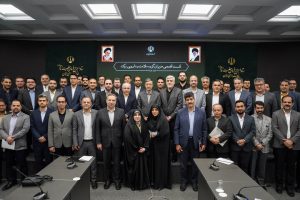
-
Safa Appointed as Barekat General Director
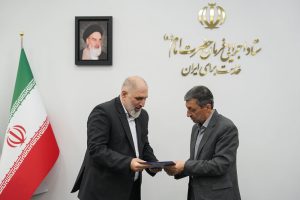
-
Barekat Health & Pharmaceutical Group at the 10th Iran Pharma Exhibition
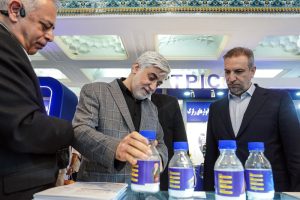
-
Ali Safa visits Sobhan Oncology & Sobhan Darou
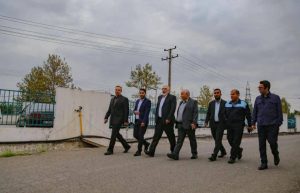
-
Pirsalehi & Safa visit Saman Daroo 8 Knowledge-based Company
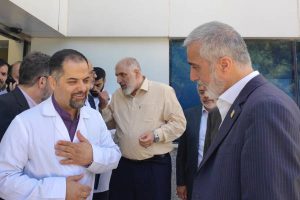
-
Barekat Managing Director Visits Samen Pharmaceutical Company
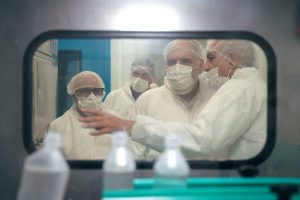
-
Honoring Pharmacists’ Day
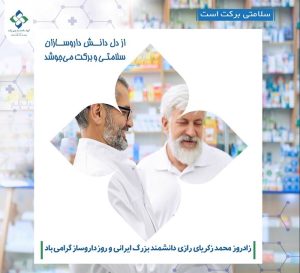
-
Barekat Top Executives Visiting to Barekat Hospital
